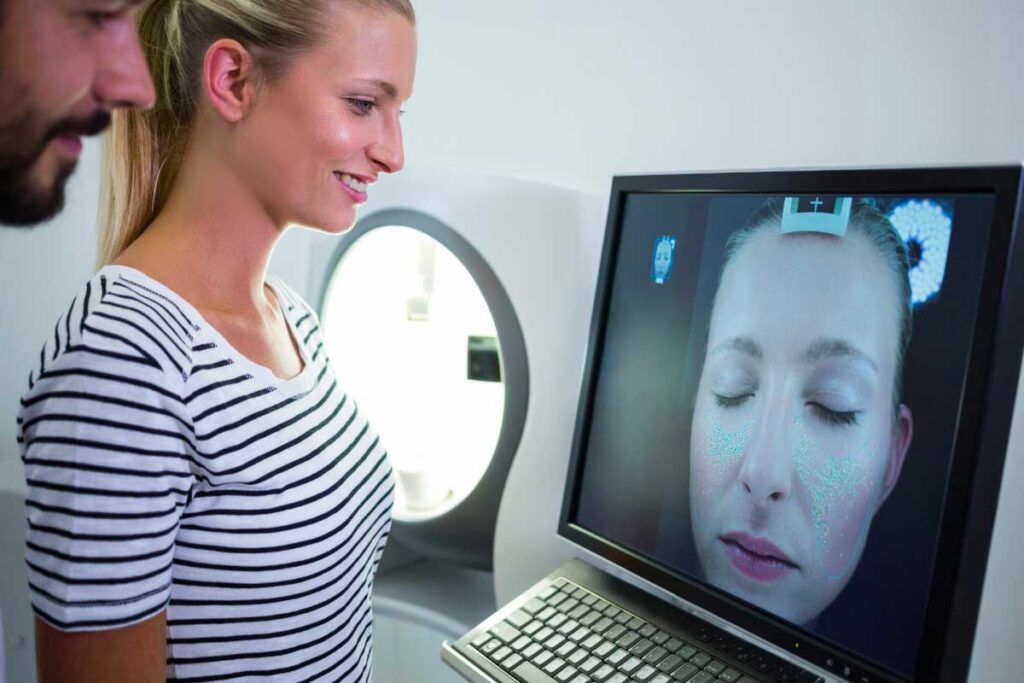3D Printing for Cosmetic Surgery
3D printing technology, a groundbreaking innovation, has significantly transformed various industries, including healthcare. Its introduction into cosmetic surgery marks a revolutionary step forward. This technology, also known as additive manufacturing, involves creating three-dimensional objects from a digital file, layer by layer. In cosmetic surgery, 3D printing offers unparalleled precision and customization. It enables surgeons to create detailed models of a patient’s anatomy, allowing for more accurate planning and execution of surgical procedures. This technology is not just about enhancing aesthetic outcomes; it’s a tool for improving patient safety and satisfaction. The ability to visualize and practice on a 3D model before actual surgery reduces risks and ensures better results. As we delve deeper into the use of 3D printing in cosmetic surgery, it’s evident that this technology is more than a trend; it’s a pivotal element shaping the future of cosmetic procedures.
History of 3D Printing in Medicine
The journey of 3D printing in medicine has been a fascinating evolution, distinctly separate from its initial industrial applications. It first garnered attention in the medical field for creating prosthetics and patient-specific implants. This was a significant leap from traditional manufacturing methods, which often struggled to meet the unique anatomical needs of each patient. As the technology evolved, its potential in cosmetic surgery became apparent. Surgeons realized that they could use 3D printing for more than just reconstructive purposes; it could also enhance aesthetic procedures.
For instance, at the Tummy Tuck Surgery Center in Miami, 3D printing technology is leveraged to create precise surgical guides and models. This advancement ensures that procedures like abdominoplasty are not only effective but also tailored to the individual’s specific body contours. This personalized approach has drastically improved surgical outcomes, reducing recovery times and increasing patient satisfaction. The history of 3D printing in medicine, particularly in cosmetic surgery, is a testament to how technological advancements can redefine patient care and surgical precision.

Custom Implants and Prosthetics
3D printing in cosmetic surgery has ushered in an era of custom implants and prosthetics, marking a significant leap from conventional, one-size-fits-all solutions. This technology empowers surgeons to design and create implants that are perfectly tailored to the patient’s unique anatomy. The level of customization achievable with 3D printing means that implants are not only more comfortable but also align more closely with the desired aesthetic outcomes.
A key aspect of this technology is its ability to produce:
- Anatomically Accurate Models: These models offer a precise representation of the patient’s body structure.
- Personalized Implants: Each implant is specifically designed to fit the individual’s unique contours.
- Enhanced Aesthetic Results: Customization leads to more natural-looking and satisfactory results.
- Reduced Surgery Time: With pre-planned and pre-made implants, surgery duration is often decreased.
- Increased Safety: The precise fit minimizes the risk of complications.
To further understand this, one can explore resources like the National Institutes of Health, which provides extensive information on medical advancements. The integration of 3D printing in cosmetic surgery is not just a technical improvement; it’s a patient-centric approach that enhances both the experience and the outcomes of cosmetic procedures.
This level of personalization, previously unattainable, is revolutionizing how cosmetic surgeries are planned and executed, marking a new chapter in patient care and medical innovation.
Enhancing Surgical Planning
The integration of 3D printing into cosmetic surgery has significantly enhanced surgical planning, offering a level of precision and personalization previously unattainable. This advanced technology allows surgeons to move beyond the limitations of traditional imaging methods. With 3D printed models, they gain a tangible, accurate representation of the patient’s anatomy. This is crucial in cosmetic surgery, where millimeters can make a difference in the outcome.
These models serve as a blueprint for the surgery, enabling surgeons to plan and simulate the procedure in a highly detailed and accurate manner. This preparation reduces uncertainties and allows for fine-tuning before the actual surgery, ensuring a higher success rate. The ability to foresee potential challenges and plan accordingly minimizes risks, thereby enhancing patient safety.
Moreover, the use of 3D models in surgical planning fosters better communication between the surgeon and the patient. Patients can visualize what to expect from the surgery, leading to more informed decision-making and setting realistic expectations. This aspect is vital in cosmetic surgery, where patient satisfaction is closely linked to their understanding of the potential results. Thus, 3D printing in surgical planning not only optimizes the procedure but also strengthens the trust and relationship between the patient and the surgeon.
Ethical Considerations
The adoption of 3D printing in cosmetic surgery brings with it a set of ethical considerations that must be addressed. As with any medical innovation, it’s crucial to balance the benefits with potential ethical implications.
The key concerns in this realm include:
- Patient Consent: Ensuring that patients are fully informed about the use of 3D printing in their procedures.
- Privacy and Data Security: Safeguarding the digital data used in creating 3D models, which often contain sensitive patient information.
- Accessibility and Equity: Addressing the disparities in access to this advanced technology across different socio-economic groups.
Organizations like the American Medical Association provide guidelines and resources for navigating these ethical challenges. It is essential for practitioners in the field of cosmetic surgery to remain vigilant about these ethical aspects. They must ensure that the use of 3D printing adheres to the highest standards of patient care and ethics.
This includes obtaining informed consent, protecting patient data, and striving to make these advanced treatments accessible to a broader range of patients. By addressing these ethical concerns, the medical community can fully harness the potential of 3D printing in cosmetic surgery while upholding the principles of medical ethics and patient welfare.
Future Possibilities in Cosmetics

The future of 3D printing in cosmetic surgery is not just promising; it’s on the cusp of revolutionary advancements. One of the most exciting prospects is the ability to print biological materials. Imagine a world where cosmetic enhancements and reconstructions are not just about synthetic implants, but about using biologically compatible materials, seamlessly integrated with the human body. This concept is not far-fetched, as research in bioprinting is rapidly progressing.
For instance, a university set to print human hearts demonstrates the potential of this technology in creating complex biological structures. This advancement opens a new frontier in cosmetic surgery, where procedures could be more natural, less invasive, and more harmonious with the body’s biological processes.
The implication of such developments in cosmetic surgery is profound. It could lead to treatments that are not only aesthetically pleasing but also promote healing and integration with the body’s own tissues. The blending of cosmetic enhancements with regenerative medicine could redefine our understanding of beauty and surgery. As 3D printing technology continues to evolve, it holds the promise of transforming cosmetic surgery into a field that not only changes appearances but also enhances the body’s natural functionality and health.
In light of these facts
3D printing in cosmetic surgery represents a significant leap forward in medical technology. Its impact extends beyond aesthetic improvements, offering enhanced precision, customization, and patient safety. As we continue to explore its capabilities, 3D printing is set to redefine cosmetic surgery, making it more efficient, effective, and patient-centric. The future of this technology promises even greater advancements, potentially transforming cosmetic procedures in ways we are only beginning to imagine.






